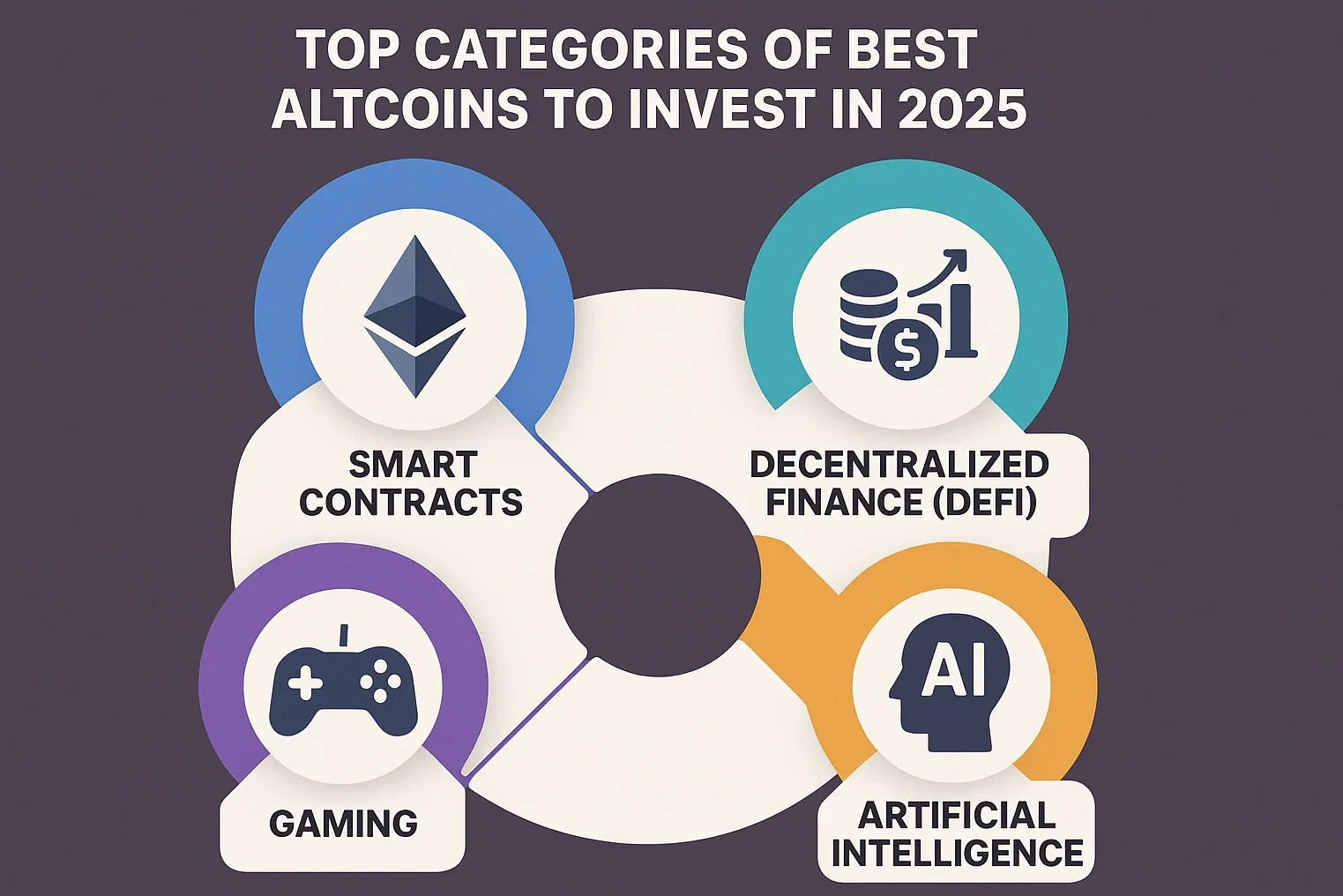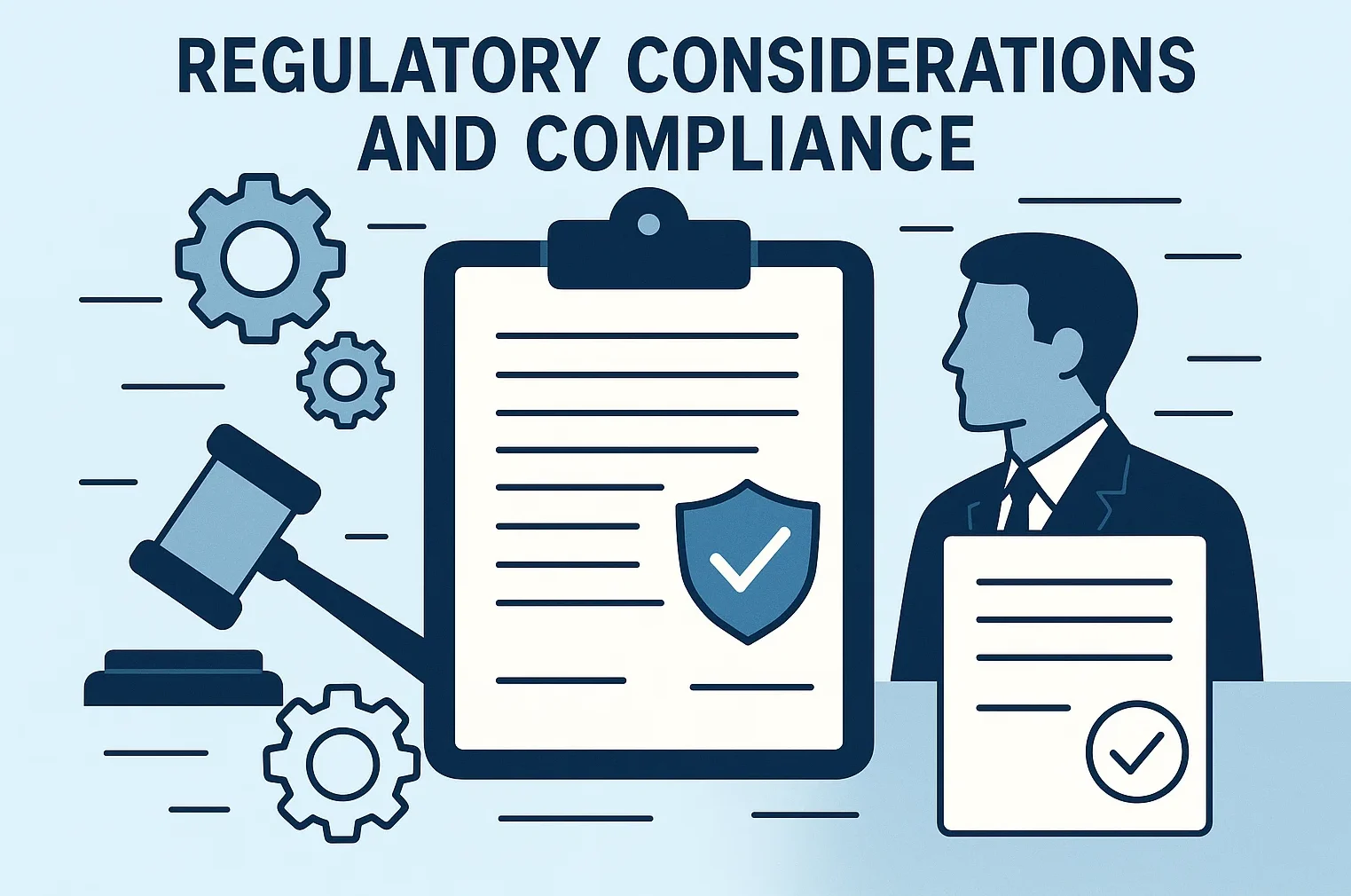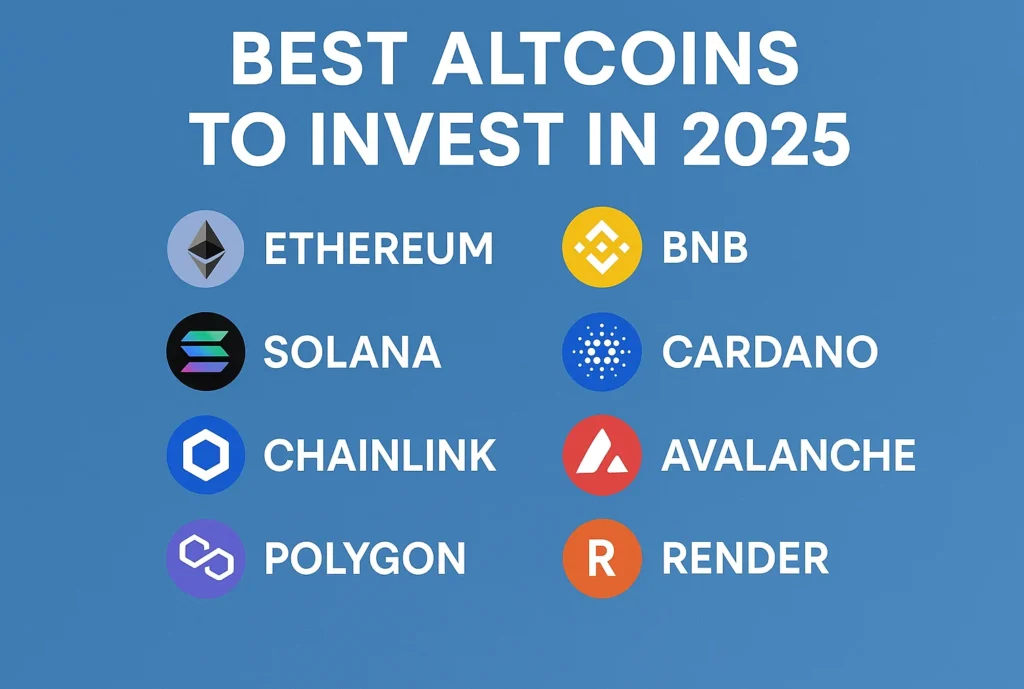The cryptocurrency landscape continues to evolve rapidly, and identifying the best altcoins to invest in 2025 has become crucial for investors seeking substantial returns. With Bitcoin’s dominance fluctuating and institutional adoption growing, alternative cryptocurrencies present unprecedented opportunities for portfolio diversification and wealth generation.
This comprehensive guide analyzes the most promising digital assets that could deliver exceptional performance in 2025, backed by fundamental analysis, technological innovation, and market trends. Whether you’re a seasoned crypto investor or just starting your digital asset journey, understanding which altcoins offer the greatest potential will be essential for navigating the dynamic crypto market ahead.
Understanding the Altcoin Investment Landscape in 2025
The alternative cryptocurrency market has matured significantly, with over 10,000+ digital assets competing for investor attention. However, not all altcoins are created equal, and successful investing requires careful analysis of project fundamentals, team expertise, use case validity, and market positioning.
Key factors driving altcoin investment decisions in 2025 include regulatory clarity, institutional adoption, technological advancement, and real-world utility. The most successful altcoins will likely be those solving genuine problems while maintaining strong tokenomics and development momentum.
Market analysts predict that the altcoin season of 2025 will be characterized by increased scrutiny from both retail and institutional investors, making project quality more important than ever before. This shift toward fundamental analysis creates opportunities for well-researched investments while reducing the impact of purely speculative trading.
Top Categories of Best Altcoins to Invest in 2025

Layer 1 Blockchain Solutions
Layer 1 blockchains represent the foundation of the cryptocurrency ecosystem, offering alternatives to Ethereum’s network with improved scalability, lower fees, and enhanced functionality. These platforms host decentralized applications (dApps) and smart contracts while providing the infrastructure for the broader crypto economy.
Solana (SOL) continues to lead the high-performance blockchain category with transaction speeds exceeding 65,000 TPS and minimal fees. The platform’s growing DeFi ecosystem, NFT marketplace dominance, and institutional partnerships position it as a strong contender for 2025 growth. Recent network stability improvements and developer tool enhancements have addressed previous concerns about reliability.
Cardano (ADA) offers a research-driven approach to blockchain development, with its proof-of-stake consensus mechanism providing energy efficiency and scalability. The platform’s focus on academic rigor and peer-reviewed development creates a solid foundation for long-term growth, particularly as smart contract functionality continues expanding.
Avalanche (AVAX) provides a unique consensus mechanism enabling near-instant transaction finality while maintaining decentralization. The platform’s subnet architecture allows for customized blockchain deployments, attracting enterprise adoption and specialized use cases that could drive significant value appreciation.
Decentralized Finance (DeFi) Tokens
The DeFi sector continues expanding beyond traditional financial services, creating new opportunities for yield generation, lending, and decentralized trading. The best DeFi altcoins combine innovative protocols with strong community governance and sustainable tokenomics.
Uniswap (UNI) remains the leading decentralized exchange protocol, facilitating billions in trading volume while distributing fees to token holders. The platform’s continuous innovation in automated market making and cross-chain functionality positions it for continued growth as DeFi adoption increases.
Chainlink (LINK) provides essential oracle services connecting blockchains to real-world data, making it indispensable for DeFi applications, insurance protocols, and smart contract automation. The network’s expanding partnerships with traditional enterprises and blockchain projects create multiple revenue streams and use case expansion.
Compound (COMP) pioneered decentralized lending protocols, allowing users to earn interest on cryptocurrency deposits while borrowing against collateral. The platform’s governance token provides voting rights on protocol upgrades and parameter adjustments, creating value for long-term holders.
Gaming and Metaverse Altcoins with High Potential
The convergence of blockchain technology with gaming and virtual worlds represents one of the fastest-growing sectors in cryptocurrency. These projects combine entertainment with financial incentives, creating sustainable ecosystems that reward player participation and content creation.
The Sandbox (SAND) has established itself as a leading decentralized gaming platform where users can create, own, and monetize virtual experiences. The platform’s partnerships with major brands and celebrities, combined with limited land supply, create scarcity-driven value appreciation potential.
Axie Infinity (AXS) revolutionized play-to-earn gaming, enabling players to earn cryptocurrency through gameplay and NFT breeding. Despite market volatility, the platform’s continuous development and expanding game ecosystem maintain its position as a category leader with significant upside potential.
Enjin Coin (ENJ) provides the infrastructure for integrating NFTs and blockchain technology into existing games. The platform’s focus on developer tools and cross-platform compatibility positions it to benefit from mainstream gaming industry adoption of blockchain technology.
Privacy-Focused Cryptocurrencies
Privacy coins address growing concerns about financial surveillance and data protection, offering enhanced anonymity features that traditional cryptocurrencies lack. These projects serve specific use cases while maintaining compliance with evolving regulatory frameworks.
Monero (XMR) utilizes ring signatures and stealth addresses to provide untraceable transactions, making it the gold standard for privacy-focused cryptocurrency. Despite regulatory challenges in some jurisdictions, growing privacy concerns and institutional interest in confidential transactions support long-term value appreciation.
Zcash (ZEC) offers selective transparency through zero-knowledge proofs, allowing users to choose between transparent and shielded transactions. This flexibility appeals to both privacy-conscious users and compliance-focused institutions, creating broader adoption potential.
Emerging Altcoins with Disruptive Potential
Artificial Intelligence and Machine Learning Tokens
The integration of AI technology with blockchain creates new possibilities for automated trading, predictive analytics, and decentralized AI services. These projects represent the cutting edge of technological innovation within the cryptocurrency space.
SingularityNET (AGIX) creates a decentralized marketplace for AI services, allowing developers to monetize artificial intelligence algorithms while providing users access to diverse AI capabilities. The platform’s focus on artificial general intelligence development positions it at the forefront of AI-blockchain convergence.
Fetch.ai (FET) combines machine learning with blockchain technology to create autonomous economic agents capable of performing complex tasks without human intervention. The platform’s applications in supply chain optimization, smart city development, and IoT integration provide multiple growth catalysts.
Green Energy and Sustainability Tokens
Environmental consciousness drives demand for eco-friendly blockchain solutions, creating opportunities for projects focused on sustainability and carbon neutrality. These altcoins appeal to ESG-focused investors while addressing climate change concerns.
Energy Web Token (EWT) powers a blockchain specifically designed for the energy sector, enabling renewable energy trading, grid optimization, and carbon credit management. The platform’s partnerships with major energy companies and government organizations provide institutional adoption pathways.
Power Ledger (POWR) facilitates peer-to-peer energy trading, allowing renewable energy producers to sell excess power directly to consumers. The platform’s real-world implementations in multiple countries demonstrate practical utility and scalability potential.
Risk Assessment and Investment Strategies
Portfolio Diversification Approaches
Successful altcoin investing requires balanced portfolio construction across different categories, market capitalizations, and risk profiles. The optimal allocation depends on individual risk tolerance, investment timeline, and market outlook.
Conservative Strategy: Allocate 60% to established large-cap altcoins, 25% to mid-cap projects with proven utility, and 15% to high-potential small-cap gems. This approach prioritizes capital preservation while maintaining growth exposure.
Aggressive Strategy: Invest 40% in large-cap altcoins, 35% in emerging mid-cap projects, and 25% in early-stage tokens with disruptive potential. This allocation maximizes growth potential while accepting higher volatility and risk.
Balanced Strategy: Distribute investments equally across three tiers: established altcoins (33%), growing projects (33%), and speculative opportunities (34%). This approach provides moderate risk exposure with diversified growth potential.
Due Diligence Framework
Thorough research remains essential for identifying legitimate investment opportunities while avoiding scams and failed projects. Key evaluation criteria include team experience, technology innovation, partnership quality, and community engagement.
Technical Analysis: Evaluate blockchain architecture, consensus mechanisms, scalability solutions, and security features. Projects with superior technology foundations typically outperform during market cycles and maintain competitive advantages.
Fundamental Analysis: Assess tokenomics, revenue models, adoption metrics, and competitive positioning. Strong fundamentals provide downside protection during market volatility and support long-term value creation.
Market Analysis: Monitor trading volume, liquidity, exchange listings, and institutional interest. Projects with strong market support demonstrate investor confidence and reduced manipulation risk.
Regulatory Considerations and Compliance

The evolving regulatory landscape significantly impacts altcoin valuations and adoption potential. Projects that proactively address compliance requirements while maintaining innovation leadership position themselves for sustainable growth.
Regulatory Clarity: Jurisdictions providing clear cryptocurrency regulations create favorable environments for project development and institutional adoption. Altcoins operating in compliant frameworks often command premium valuations due to reduced regulatory risk.
Compliance Features: Projects incorporating know-your-customer (KYC) procedures, anti-money laundering (AML) controls, and tax reporting tools appeal to institutional investors and regulated financial services firms.
Global Accessibility: Altcoins maintaining compliance across multiple jurisdictions maximize their addressable market while reducing geographic concentration risk.
Market Timing and Entry Strategies
Dollar-Cost Averaging Benefits
Systematic investment approaches help mitigate volatility risk while building positions over time. Dollar-cost averaging particularly benefits altcoin investing due to the sector’s inherent price fluctuations and growth potential.
Weekly Investment Plans: Consistent weekly purchases reduce timing risk while taking advantage of market volatility. This approach works especially well for established altcoins with strong long-term fundamentals.
Dip Buying Strategies: Maintaining cash reserves for opportunistic purchases during market corrections can significantly improve average entry prices and long-term returns.
Technical Analysis Integration
Combining fundamental research with technical analysis improves entry timing and risk management. Key indicators include support and resistance levels, moving averages, and momentum oscillators.
Chart Pattern Recognition: Identifying bullish formations such as ascending triangles, cup and handle patterns, and flag continuations can optimize entry timing and profit potential.
Volume Analysis: Confirming price movements with above-average trading volume validates breakout authenticity and trend continuation probability.
Conclusion
Identifying the best altcoins to invest in 2025 requires careful analysis of market trends, technological innovation, and fundamental project strengths. The most promising opportunities exist in established platforms with growing adoption, emerging technologies solving real problems, and projects positioned to benefit from mainstream blockchain integration.
Successful altcoin investing demands diversification across categories, disciplined risk management, and continuous education about market developments. Start with thorough research, implement systematic investment strategies, and maintain a long-term perspective while staying informed about regulatory changes and technological advances.
SEE MORE:Best Altcoins to Buy Now News Top 2025 Crypto Picks

















